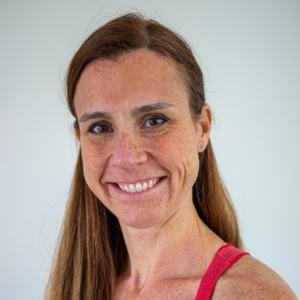A lot of people come to see me for physical therapy with the diagnosis of “Knee OA”, or osteoarthritis. Another common descriptor is “my knees are ‘bone on bone’”. And yet, many people don’t really understand what this means, how it happens, or what the general prognosis is following diagnosis. It’s no wonder that this can be very scary! The good news is that OA comes in slow stages of progression and isn’t an indicator of either pain or function in a lot of people.
The term “arthritis” refers to inflammation (-itis) of a joint (arthr-). Osteoarthritis is the most common form of arthritis in the knees. It is a degenerative, wear-and-tear type of arthritis that occurs most often in people ages 50 and older. There is a gradual wearing away of the protective covering (articular cartilage) of the bones of the knee (femur, tibia, and patella), which results in a decrease in the joint space. As the cartilage wears away, it becomes frayed and rough. Over time, this can result in bone rubbing on bone and the development of painful bone spurs. The knee may become stiff and swollen, which may be worse in the morning or after prolonged sitting. Loose fragments of cartilage can interfere with knee range of motion and cause locking or a grinding noise (crepitus). But all of this usually doesn’t occur until the later stages of OA, so a lot can be done to manage symptoms and halt progression of this degenerative diagnosis.
When a person comes to see me with this or any diagnosis, I always do an examination. With any type of wear-and-tear issue, the most important thing to evaluate is the body in motion. In the simplest of terms, humans are just very advanced machines. In the same way that your tires will wear unevenly if you don’t rotate them, your body will wear down if you don’t give it regular tune ups and move in multiple planes of motion! So typically if someone has developed OA in the knees, it’s due to traditionally both poor body mechanics and overuse of some sort. By improving the way in which we move, we decrease the wear and tear through our joints. Keeping the kneecaps (patellae) tracking over the feet, sitting back into the hips with heels-down squatting to keep the knees behind the toes, and maintaining strength in the core and hips all help minimize the amount of weight through the articular cartilage of the knees. Maintaining full joint range of motion allows weight to be transferred across a larger surface area and minimizes the amount of force through in any area in particular. It is important to note that the knees are pretty simple joints. All they really want to do is bend and straighten. If that’s all they do throughout their life, they tend to stay pretty healthy. It’s when medial, lateral and twisting moments occur at the joint that we see injury. It’s with overuse, such as overtraining, that we see wear-and-tear. But the fact of the matter is that we need weight-bearing exercise to maintain health of our articular cartilage. Studies have shown that 10% of sedentary people have knee OA as compared to only 3% of recreational runners. In elite/professional runners, the percentage increases to 13% due to the overuse. Add exercise in additional planes of motion, such as LYT™ yoga, which increases strength of the hips and core, increases muscle and joint flexibility, and focuses on proper joint mechanics, and I’d argue your chances diminish even further. So pay attention to how you move, stretch what’s tight, strengthen what’s weak, mobilize what’s stiff and stabilize what’s hypermobile. Create a more effective and efficient machine to combat knee osteoarthritis…or osteoarthritis of any joint for that matter! Movement is medicine! On that note, I’ll see you on the mat!
Xoxo,
Kristin











